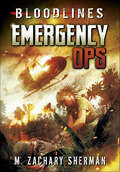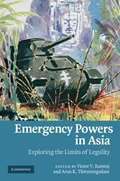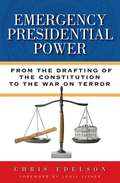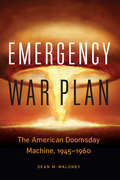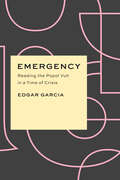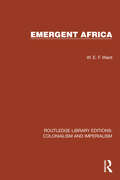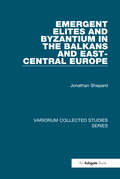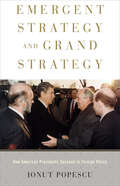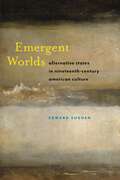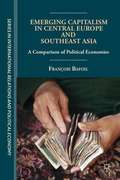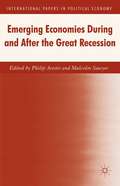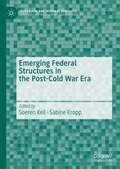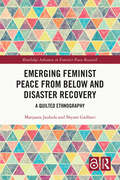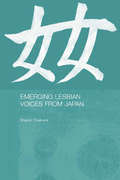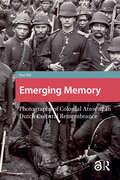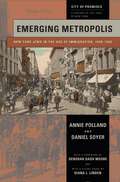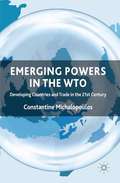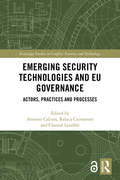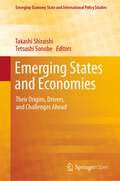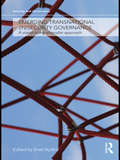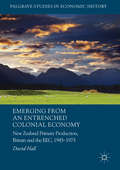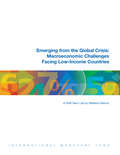- Table View
- List View
Emergency Ki Inside Story: इमरजेंसी की इनसाइड स्टोरी
by Kuldip Nayar‘इन सबकी शुरुआत उड़ीसा में 1972 में हुए उप-चुनाव से हुई। लाखों रुपए खर्च कर नंदिनी को राज्य की विधानसभा के लिए चुना गया था। गांधीवादी जयप्रकाश नारायण ने भ्रष्टाचार के इस मुद्दे को प्रधानमंत्री के सामने उठाया। उन्होंने बचाव में कहा कि कांग्रेस के पास इतने भी पैसे नहीं कि वह पार्टी दफ्तर चला सके। जब उन्हें सही जवाब नहीं मिला, तब वे इस मुद्दे को देश के बीच ले गए। एक के बाद दूसरी घटना होती चली गई और जे.पी. ने ऐलान किया कि अब जंग जनता और सरकार के बीच है। जनता—जो सरकार से जवाबदेही चाहती थी और सरकार—जो बेदाग निकलने की इच्छुक नहीं थी।’ ख्यातिप्राप्त लेखक कुलदीप नैयर इमरजेंसी के पीछे की सच्ची कहानी बता रहे हैं। क्यों घोषित हुई इमरजेंसी और इसका मतलब क्या था, यह आज भी प्रासंगिक है, क्योंकि तब प्रेरणा की शक्ति भ्रष्टाचार के मुद्दे पर मिली थी और आज भी सबकी जबान पर भ्रष्टाचार का ही मुद्दा है। एक नई प्रस्तावना के साथ लेखक वर्तमान पाठकों को एक बार फिर तथ्य, मिथ्या और सत्य के साथ आसानी से समझ आनेवाली विश्लेषणात्मक शैली में परिचित करा रहे हैं। वह अनकही यातनाओं और मुख्य अधिकारियों के साथ ही उनके काम करने के तरीके से परदा उठाते हैं। भारत के लोकतंत्र में 19 महीने छाई रही अमावस पर रहस्योद्घाटन करनेवाली एक ऐसी पुस्तक, जिसे अवश्य पढ़ना चाहिए।
Emergency Ops (Bloodlines)
by M. Zachary ShermanDuring the Vietnam War, Captain Anne Donovan's aid station is pinned down by a sniper near the front lines, and the doctor performing a life-threatening surgery is critically wounded. Donovan must take control of not only the operating room, but her emotions as well.
Emergency Powers in Asia: Exploring the Limits of Legality
by Victor V. Ramraj Arun K. ThiruvengadamWhat is the relevance of contemporary debates over emergency powers for countries situated in Asia? What role does, and should, the constitution play in constraining these powers? The essays in this collection address these issues, drawing on emergency situations in over 20 countries in Asia as a ready-made laboratory for exploring the relationship between emergency powers and constitutionalism. This volume therefore rests squarely at the intersection of two debates - a debate over the ability of law to constrain the invocation and use of emergency powers by the executive in times of crisis, and a debate over the nature and viability of constitutionalism in Asia. At this intersection are fundamental questions about constitutionalism and the nature of the modern state, questions that invite legal, political, sociological and historical analysis.
Emergency Presidential Power
by Chris EdelsonCan a U. S. president decide to hold suspected terrorists indefinitely without charges or secretly monitor telephone conversations and e-mails without a warrant in the interest of national security? Was the George W. Bush administration justified in authorizing waterboarding? Was President Obama justified in ordering the killing, without trial or hearing, of a U. S. citizen suspected of terrorist activity? Defining the scope and limits of emergency presidential power might seem easy-just turn to Article II of the Constitution. But as Chris Edelson shows, the reality is complicated. In times of crisis, presidents have frequently staked out claims to broad national security power. Ultimately it is up to the Congress, the courts, and the people to decide whether presidents are acting appropriately or have gone too far. Drawing on excerpts from the U. S. Constitution, Supreme Court opinions, Department of Justice memos, and other primary documents, Edelson weighs the various arguments that presidents have used to justify the expansive use of executive power in times of crisis. Emergency Presidential Power uses the historical record to evaluate and analyze presidential actions before and after the terrorist attacks of September 11, 2001. The choices of the twenty-first century, Edelson concludes, have pushed the boundaries of emergency presidential power in ways that may provide dangerous precedents for current and future commanders-in-chief.
Emergency War Plan: The American Doomsday Machine, 1945–1960
by Sean M. MaloneyEmergency War Plan examines the theory and practice of American nuclear deterrence and its evolution during the Cold War. Previous examinations of nuclear strategy during this time have, for the most part, categorized American efforts as &“massive retaliation&” and &“mutually assured destruction,&” blunt instruments to be casually dismissed in favor of more flexible approaches or summed up in inflammatory and judgmental terms like &“MAD.&” These descriptors evolved into slogans, and any nuanced discussion of the efficacy of the actual strategies withered due to a variety of political and social factors. Drawing on newly released weapons effects information along with new information about Soviet capabilities as well as risky and covert espionage missions, Emergency War Plan provides a completely new examination of American nuclear deterrence strategy during the first fifteen years of the Cold War, the first such study since the 1980s. Ultimately what emerges is a picture of a gargantuan and potentially devastating enterprise that was understood at the time by the public in only the vaguest terms but that was not as out of control as has been alleged and was more nuanced than previously understood.
Emergency!: Behind the Scene
by Richard Yokley Rozane SutherlandEMERGENCY! Is still a favorite with fans all over the world. When the show premiered in 1972, fire department paramedic services were being piloted in just a handful of cities. By 1977, over 50% of the U.S. population was within 10 minutes of a paramedic unit. The paramedics of Fire Station 51 showed viewers critical techniques, such as CPR, that saved lives, both on-screen and off! Emergency! Behind the Scene contains real-life tales from the production crew-medical and fire technical advisors, cast members and writers, to paramedics and fire fighters. Learn more about Johnny Gage, Roy DeSoto, Dixie McCall, and the rest of the Station 51 and Rampart General Hospital staff. If you are a fire fighter paramedic, or simply a fan, you will enjoy this in-depth look behind the scenes! "Watching Johnny and Roy in action on Emergency! was a reflection of how early Los Angeles County Fire Department paramedics really worked; it redefined the scope of the fire service. It was truly one of America's first reality shows." -P Michael Freeman, Fire Chief, Los Angeles County Fire Department
Emergency: Reading the Popol Vuh in a Time of Crisis (Critical Antiquities)
by Edgar GarciaNine short essays exploring the K’iche’ Maya story of creation, the Popol Vuh. Written during the lockdown in Chicago in the depths of the COVID-19 pandemic, these essays consider the Popol Vuh as a work that was also written during a time of feverish social, political, and epidemiological crisis as Spanish missionaries and colonial military deepened their conquest of indigenous peoples and cultures in Mesoamerica. What separates the Popol Vuh from many other creation texts is the disposition of the gods engaged in creation. Whereas the book of Genesis is declarative in telling the story of the world’s creation, the Popol Vuh is interrogative and analytical: the gods, for example, question whether people actually need to be created, given the many perfect animals they have already placed on earth. Emergency uses the historical emergency of the Popol Vuh to frame the ongoing emergencies of colonialism that have surfaced all too clearly in the global health crisis of COVID-19. In doing so, these essays reveal how the authors of the Popol Vuh—while implicated in deep social crisis—nonetheless insisted on transforming emergency into scenes of social, political, and intellectual emergence, translating crisis into creativity and world creation.
Emergency: Reading the Popol Vuh in a Time of Crisis (Critical Antiquities)
by Edgar GarciaNine short essays exploring the K’iche’ Maya story of creation, the Popol Vuh. Written during the lockdown in Chicago in the depths of the COVID-19 pandemic, these essays consider the Popol Vuh as a work that was also written during a time of feverish social, political, and epidemiological crisis as Spanish missionaries and colonial military deepened their conquest of indigenous peoples and cultures in Mesoamerica. What separates the Popol Vuh from many other creation texts is the disposition of the gods engaged in creation. Whereas the book of Genesis is declarative in telling the story of the world’s creation, the Popol Vuh is interrogative and analytical: the gods, for example, question whether people actually need to be created, given the many perfect animals they have already placed on earth. Emergency uses the historical emergency of the Popol Vuh to frame the ongoing emergencies of colonialism that have surfaced all too clearly in the global health crisis of COVID-19. In doing so, these essays reveal how the authors of the Popol Vuh—while implicated in deep social crisis—nonetheless insisted on transforming emergency into scenes of social, political, and intellectual emergence, translating crisis into creativity and world creation.
Emergent Africa (Routledge Library Editions: Colonialism and Imperialism #25)
by W.E.F. WardEmergent Africa (1967) expertly compresses the story of European penetration into the Africa of 1800. Its fragmentation into colonies and their emergence as independent nations into a terse, clear narrative. It describes the first European explorations, the ‘Scramble for Africa’, the world wars, the achievement of independence, and modern problems such as apartheid and one-party rule.
Emergent Elites and Byzantium in the Balkans and East-Central Europe (Variorum Collected Studies)
by Jonathan ShepardAccording to Byzantium's leaders, their imperial order anchored in Constantinople was the centre of excellence - spiritual, moral, material and aesthetic. They rewarded individuals willing to join, and favoured outside groupings prepared to cooperate militarily or politically. Interactions with outsiders varied over place and time, complicated by the sometimes differing priorities of Byzantine churchmen and monks on or beyond Byzantium's borders. These studies consider the dynamics of such interactions, notably the interrelationship between the Bulgarians and their Byzantine neighbour. The Bulgarians' reaction to Byzantium ranged from 'contrarianism' to the systematic adaptation of Byzantine religious orthodoxy, ideals of rulership and normative values after Khan Boris' acceptance of eastern Christianity. For their part, Byzantine rulers were readier to do business with their Bulgarian counterparts than official pronouncements let on, occasionally even adopting aspects of Bulgarian political culture. Byzantium's interrelationship with other ruling elites was less intensive, but the process of Christianisation and the need to format this in readily comprehensible terms could make even distant potentates look to the template of effective Christian sole rulership which Byzantium's rulers embodied. Hungarian and Rus leaders were of abiding geopolitical interest to imperial statecraft, and the studies here show how during the generations around 1000 Byzantine political imagery resonated throughout the region.
Emergent Strategy and Grand Strategy: How American Presidents Succeed in Foreign Policy
by Ionut PopescuWhat if successful strategies are sometimes formed through an emergent process of learning and adaptation?Is following a coherent grand strategy the key to achieving successful outcomes in American foreign policy? For many experts in academia and Washington, the answer is yes. Policymakers usually face criticism when they take incremental actions based on short-term considerations. But could such actions actually converge into a successful emergent strategy over time?Ionut Popescu conclusively shows that in some cases, an emergent learning model leads to better overall strategic performance than a long-term strategic plan or framework. Popescu argues that it is time to rethink the origins of some of the most important successes and failures of America’s tenure as a global superpower after World War II. Presenting empirical data culled from archival research and interviews with higher-ups, Popescu covers eight US presidential administrations, ranging from Truman to Obama, to demonstrate that senior policymakers should be skeptical of the idea that formulating and implementing a long-term grand strategy is the road to a successful foreign policy legacy.Instead, the book asserts, leaders should prioritize learning from the almost unavoidable mistakes they will make early in their careers and adapting their plans to unanticipated events and changes in the international environment. Emergent Strategy and Grand Strategy thus offers both scholars and practitioners of foreign policy an original theoretical framework to explain strategic success.
Emergent Worlds: Alternative States in Nineteenth-Century American Culture (America and the Long 19th Century #4)
by Edward SugdenReimagines the American 19th century through a sweeping interdisciplinary engagement with oceans, genres, and timeEmergent Worlds re-locates nineteenth-century America from the land to the oceans and seas that surrounded it. Edward Sugden argues that these ocean spaces existed in a unique historical fold between the transformations that inaugurated the modern era—colonialism to nationalism, mercantilism to capitalism, slavery to freedom, and deferent subject to free citizen. As travellers, workers, and writers journeyed across the Pacific, Atlantic, and Caribbean Sea, they had to adapt their political expectations to the interstitial social realities that they saw before them while also feeling their very consciousness, particularly their perception of time, mutate. These four domains—oceanic geography, historical folds, emergent politics, and dissonant times—in turn, provided the conditions for the development of three previously unnamed genres of the 1850s: the Pacific elegy, the black counterfactual, and the immigrant gothic.In telling the history of these emergent worlds and their importance to the development of the literary cultures of the US Americas, Sugden proposes narratives that alter some of the most enduring myths of the field, including the westward spread of US imperialism, the redemptionist trajectory of black historiography, and the notion that the US Americas constituted a new world. Introducing a new generic vocabulary for describing the literature of the 1850s and crossing over oceans and languages, Emergent Worlds invokes an alternative nineteenth-century America that provides nothing less than a new way to read the era.
Emerging Capitalism in Central Europe and Southeast Asia: A Comparison of Political Economies
by François BafoilThis book examines the emergence of different forms of capitalism in Central-Eastern states in Europe and Mekong states within the Association of Southeast Asian Nations (ASEAN). All of them (but Thailand) have historically disappeared from the regional maps for long periods of time due to colonial or imperial rule. Most of them were previously members of a soviet-type economy, and they all joined ASEAN or the European Union in the 1990s or in the 2000s. These states are characterized by a strong urge toward feelings of national sovereignty due to their experiences with colonialism and imperialism. But, due to the regional economic pressures and the globalization dynamic, these states cannot articulate protectionist policies. They are forced to open their economies in order to attract Foreign Direct Investments. This results in less regulated and more political forms of capitalism than in some more developed capitalist countries. This book analyzes forms of capitalism as the arising from a combination of three conditions: the legacy of the foreign occupations, the national construction process of the sovereign state, and lastly, the dynamics of regional integration. These states' claims to national sovereignty and the manner in which they developed suggests a causative link between the forms of political domination that have presided over these transformations and the forms of capitalism that have resulted.
Emerging Economies During and After the Great Recession (International Papers In Political Economy Ser.)
by Philip Arestis Malcolm SawyerThe International Papers in Political Economy (IPPE) series explores the latest developments in political economy. This twelfth volume presents a collection of eight papers, analysing the emergence and economic problems of the emerging economies during and after the international financial crisis of 2007–8 and the subsequent Great Recession. The contributions range from an analysis of the international financial crisis of 2007–8 in general terms to an analysis of the same but concentrating on the emerging economies, before turning to groups of economies, Arab, African and Eastern European countries, and two relevant but individual countries, namely China and Turkey. This book offers students, scholars, researchers and policy-makers detailed analysis and informed commentary on the origins of the international financial crisis of 2007–8 and the great recession by focusing on its effect on emerging countries.
Emerging Federal Structures in the Post-Cold War Era (Federalism and Internal Conflicts)
by Soeren Keil Sabine KroppThis book conceives federalism not as a static institutional architecture, but as a dynamic formation always in flux. This may entail processes of federalization, but in some cases also lead to de-federalization. It looks at emerging federal structures worldwide and analyses federal structures: their emergence, operation and categorization. The contributors highlight that the “emergence” of these federal structures has multiple facets, from the recognition of ethnic diversity to the use of federalism as a tool of conflict resolution. Identifying and categorizing processes of federalization and defederalization in a variety of cases, the book provides much needed empirical and theoretical discussion on emerging federal structures and the changing nature of federalism in the post-Cold War era.
Emerging Feminist Peace from Below and Disaster Recovery: A Quilted Ethnography (Routledge Advances in Feminist Peace Research)
by Marjaana Jauhola Shyam GadhaviThis book offers a critical contribution to feminist peace and disaster research by challenging the successful disaster recovery narrative of the Kachchh 2001 earthquake in Gujarat, India.Engaging in a feminist intersectional analysis of complex cascades of violence, the book uses a theoretical and methodological approach to studying cascades of violence of populist post-disaster recovery, communal violence, and urban development - each with implications for intersectional social divisions, ecology, and thus, everyday peace. The book follows the mundane everyday and life-historical trajectories of the residents of the temporary shelter neighbourhood in Bhuj, drawing attention to an emerging feminist peace from below through silent resistance, care, and solidarity. It demonstrates that the impacts of disaster populism in the name of being "pro-poor" do not impact the marginalised segments of the society and disaster-affected communities, even within the same neighbourhood of the dispossessed, in the same ways. Combining underexplored newspaper and project documentation archives, the speeches of Narendra Modi delivered in Kachchh, and urban life historical ethnography, the book offers a rich analysis of gendered and intersectional experiences of how dispossession and mundane violence are embedded in the earthquake recovery – and how international humanitarian aid and urban disaster recovery are entangled with complex cascades of violence.This book will be of much interest to students of feminist theory, peace studies, post-disaster recovery, and South Asian politics.The Open Access version of this book, available at www.taylorfrancis.com, has been made available under a Creative Commons Attribution (CC-BY) 4.0 license.
Emerging Lesbian Voices from Japan
by Sharon ChalmersLesbian Sexuality has remained largely ignored in Japan despite increasing exposure of disadvantaged minority groups, including gay men. This book is the first comprehensive academic exploration of contemporary lesbian sexuality in Japanese society. The author employs an interdisciplinary approach and this book will be of great value to those working or interested in the areas of Japanese, lesbian and gender studies as well as Japanese history, anthropology and cultural studies.
Emerging Memory: Photographs of Colonial Atrocity in Dutch Cultural Remembrance (Heritage and Memory Studies)
by Paul BijlThis incisive volume brings together postcolonial studies, visual culture and cultural memory studies to explain how the Netherlands continues to rediscover its history of violence in colonial Indonesia. Dutch commentators have frequently claimed that the colonial past and especially the violence associated with it has been 'forgotten' in the Netherlands. Uncovering 'lost' photographs and other documents of violence has thereby become a recurring feature aimed at unmasking a hidden truth. The author argues that, rather than absent, such images have been consistently present in the Dutch public sphere and have been widely available in print, on television and now on the internet. Emerging Memory: Photographs of Colonial Atrocity in Dutch Cultural Remembrance shows that between memory and forgetting there is a haunted zone from which pasts that do not fit the stories nations live by keep on emerging and submerging while retaining their disturbing presence.
Emerging Metropolis: New York Jews in the Age of Immigration, 1840-1920 (City of Promises #4)
by Daniel Soyer Annie PollandDescribes New York’s transformation into a Jewish cityEmerging Metropolis tells the story of New York’s emergence as the greatest Jewish city of all time. It explores the Central European and East European Jews’ encounter with New York City, tracing immigrants’ economic, social, religious, political, and cultural adaptation between 1840 and 1920. This meticulously researched volume shows how Jews wove their ambitions and aspirations—for freedom, security, and material prosperity—into the very fabric and physical landscape of the city.
Emerging Powers in the WTO
by Constantine MichalopoulosThe most important dimension of globalization in the last thirty years and especially since 2000 has been the dramatic increase of developing country participation in world trade and the emergence of a number of powers such as Brazil, China and India that are playing an important role in the global economy and in the WTO. But many other developing countries continue to struggle to transform their economies, handicapped by institutional constraints and protection against their exports both in developed and developing country markets. This volume examines the main factors for developing country trade performance in the last thirty years, their own trade policies, market access issues they face, and their increasingly more effective participation in the WTO and the Doha Round of multilateral trade negotiations. The last part addresses the future role of the WTO in the international trade system in connection with the challenges it faces from the multitude of preferential trade agreements such as the Transatlantic Trade and Investment Partnership between the US and the EU; and recommends an action program for the more effective participation of developing countries in the world trade.
Emerging Security Technologies and EU Governance: Actors, Practices and Processes (Routledge Studies in Conflict, Security and Technology)
by Antonio Calcara Raluca Csernatoni Chantal LavalléeThis book examines the European governance of emerging security technologies. The emergence of technologies such as drones, autonomous robotics, artificial intelligence, cyber and biotechnologies has stimulated worldwide debates on their use, risks and benefits in both the civilian and the security-related fields. This volume examines the concept of ‘governance’ as an analytical framework and tool to investigate how new and emerging security technologies are governed in practice within the European Union (EU), emphasising the relational configurations among different state and non-state actors. With reference to European governance, it addresses the complex interplay of power relations, interests and framings surrounding the development of policies and strategies for the use of new security technologies. The work examines varied conceptual tools to shed light on the way diverse technologies are embedded in EU policy frameworks. Each contribution identifies actors involved in the governance of a specific technology sector, their multilevel institutional and corporate configurations, and the conflicting forces, values, ethical and legal concerns, as well as security imperatives and economic interests. This book will be of much interest to students of science and technology studies, security studies and EU policy.
Emerging States and Economies: Their Origins, Drivers, and Challenges Ahead (Emerging-Economy State and International Policy Studies)
by Tetsushi Sonobe Takashi ShiraishiThis open access book asks why and how some of the developing countries have “emerged” under a set of similar global conditions, what led individual countries to choose the particular paths that led to their “emergence,” and what challenges confront them. If we are to understand the nature of major risks and uncertainties in the world, we must look squarely at the political and economic dynamics of emerging states, such as China, India, Brazil, Russia, and ASEAN countries. Their rapid economic development has changed the distribution of wealth and power in the world. Yet many of them have middle income status. To global governance issues, they tend to adopt approaches that differ from those of advanced industrialized democracies. At home, rapid economic growth and social changes put pressure on their institutions to change. This volume traces the historical trajectories of two major emerging states, China and India, and two city states, Hong Kong and Singapore. It also analyzes cross-country data to find the general patterns of economic development and sociopolitical change in relation to globalization and to the middle income trap.
Emerging Transnational: A Statist-Transnationalist Approach (Security and Governance)
by Ersel AydinliThis book presents a selection of edited essays written by leading international scholars engaging with practicing intelligence, military, and police officers and responding to their first-hand international security cooperation experiences. The resulting chapters provide original theoretical perspectives on evolving international security cooperation practices. Beginning with the premise that intelligence cooperation-domestically between agencies, internationally between states, and transnationally among states, sub-state and non-state actors-is essential in order to successfully counter the evolving transnational nature of security threats, the authors explore the transnationalization in states' responses to a transnational security threat like 'global' terror. They assess whether early signs of a "statist transnationalism" for a new global security cooperation regime can be identified, and look at the use of extraordinary rendition and police liaisons as means for the development and growth of transnational security cooperation. This book will be of interest to students and scholars of international relations, terrorism, security, policing and intelligence.
Emerging from an Entrenched Colonial Economy
by David HallThis book is a study of New Zealand shaking off its quasi-colonial dependence on Britain. Has New Zealand moved beyond its colonial heritage? Is it now time to remove the Union Jack from the national flag and change to a Republic? Hall analyses the three decades after World War II when changes in Britain, mainly as a consequence of that war, forced New Zealand to seek new markets for its exports, which were predominantly primary produce; notably meat, wool and dairy products. A key symbol of these changes was Britain becoming a member of the European Economic Community (EEC) in 1973 - how did this engagement with Europe impact on trade with a Commonwealth country? Significantly, rather than politicians and diplomats, voices of New Zealand's primary producers (the 'backbone of the economy') are used to describe the country's decolonisation in trade. The volume traces how relationships between Britain and one of its main dominions evolved from their quasi-colonial relationship and how the dominion coped with breaking away from over-dependence on Britain not just in economic terms but also in sentimental terms. Hall provides an interesting overview of the final stages of decolonisation.
Emerging from the Global Crisis: Macroeconomic Challenges Facing Low-Income Countries
by Stefania FabrizioThis report from the International Monetary Fund on the impact of the global economic crisis on low income countries (LICs) examines the strengths and weaknesses of their positions relative to previous downturns. The volume considers the pre-crisis positions of the LICs and discusses the relatively mild effects of the current economic climate on some developing countries compared to wealthier states more deeply integrated with global financial infrastructures. The work includes numerous charts and tables as well as appendices providing relevant statistical data. Annotation ©2011 Book News, Inc. , Portland, OR (booknews. com)

